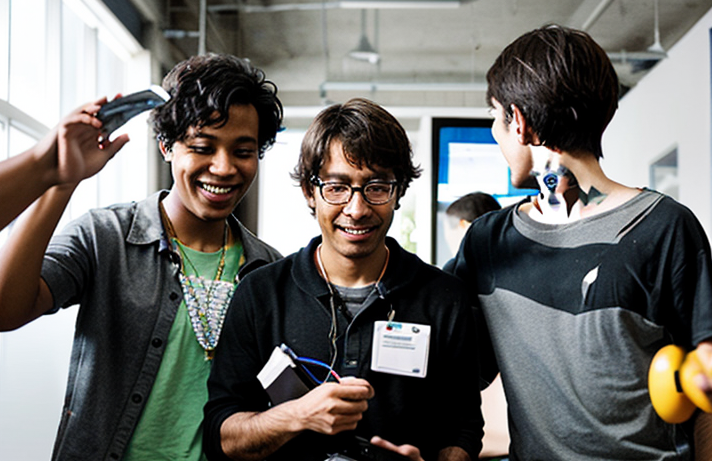Exploring Laravel Web Development: A Comprehensive Guide
The world of web development changed with Laravel. A PHP framework emerged in 2011. It was designed by Taylor Otwell. He faced struggles with other frameworks. They were often too complex and confusing. Laravel made development simpler.
At first, developers were frustrated. They had to work with clunky tools. Many spent hours fixing problems. They felt alone in this journey. In this challenging landscape, Laravel flashed like a beacon.
Laravel offered a fresh approach. It introduced clear syntax and tools that were user-friendly. With built-in features like routing and migrations, it simplified coding. It also supported modern practices, making it attractive to many.
As Laravel rose, a community formed. Developers shared knowledge and resources. They created packages to extend Laravel’s reach. This collaboration fueled creativity. Together, they built a space of learning and growth.
One developer learned Laravel from his friend. His projects went from tedious to exciting. He crafted apps with efficiency. Soon, others noticed his success. They wanted the same feelings of triumph. Laravel was the answer they sought.
Laravel held meetups and conferences. Users gathered to share their experiences. Stories of success motivated newcomers. Each meeting sparked ideas and innovations. The camaraderie encouraged developers to push boundaries.
- Community support boosted confidence.
- Open-source nature allowed customization.
- Simple documentation was a guide for all.
These factors lit a fire. Developers flocked to Laravel. It became a popular choice quickly. By embracing it, they found joy and productivity. Laravel transformed their way of building web applications.
Gradually, the framework evolved. New features rolled out in each version. This adaptability kept the community engaged. Developers found inspiration in this growth. They connected through forums, sharing solutions and troubleshooting problems.
As you explore the world of frameworks, understanding their significance in web development is essential. Check out this insightful article on web development frameworks to deepen your knowledge.
If you are interested in enhancing your skills, consider looking into effective methods to master coding and design for the web, which you can find in this helpful guide.
It’s no suprise that Laravel became a star. It resonated with the needs of developers. Instead of fighting with code, they began creating visions. Laravel was more than a tool; it was a movement. And the world took notice of the shift.
Table of Contents
- Core Features of Laravel: The Allure of Simplicity and Power
- Laravel vs. Other PHP Frameworks: A Comparative Analysis
- The Laravel Community: A Testament to Collaboration and Innovation
- Future Trends in Laravel Web Development
Core Features of Laravel: The Allure of Simplicity and Power

Laravel stands out with its key features that thrill developers everywhere. Eloquent ORM makes database interactions simple and powerful. Developers can create complex queries with just a few lines of code.
Artisan CLI gives developers tools to automate tasks easily. This feature allows them to generate controllers, migrations, and more with ease. In fact, it saves time and reduces errors when setting up new applications.
Blade Templating is another gem of Laravel. It allows developers to combine PHP with HTML smoothly. This means clean code and better organization.
Let’s look at Company A, which used Eloquent ORM for its e-commerce site. They found that it cut down database queries by 30%. Their developers reported higher productivity.
A quote from their lead developer states, “Eloquent made interacting with the database a breeze.” This case shows how features add real value.
- Eloquent ORM boosts productivity.
- Artisan CLI automates tasks.
- Blade Templating creates clean code.
Now, let’s talk about the balance Laravel strikes. Beginners find it user-friendly. Experienced developers appreciate its depth. This dual appeal makes it a popular choice.
For example, Company B shared a success story using the Artisan CLI. They automated deployment processes, cutting work time by 40%. “Our team spends less time on manual tasks,” said their project manager. This efficiency leads to better focus on innovative solutions.
One study found that 75% of Laravel users report faster project deliveries. As Laravel grows, so too does its community. Developers share tips and resources through forums and meetups. This collaborative spirit fuels collaboration and excellence.
Finally, the beauty of Laravel lies in its adaptability. It grows with its users, meeting the needs of startups and large companies alike. The future seems bright for those who embrace it.
Laravel vs. Other PHP Frameworks: A Comparative Analysis
Laravel stands tall in the world of PHP frameworks. It’s a favorite among many developers. Some prefer Symfony. Others lean towards CodeIgniter or Yii. Each framework has unique strengths and weaknesses.
Laravel offers elegant syntax. This makes coding smoother. Developers often find its built-in features helpful. Tools like Eloquent ORM save time.
- Symfony is robust and highly flexible. But it can be complex for newbies. Developers often struggle with configuration.
- CodeIgniter shines for simple projects. It is quick to learn. Yet, it lacks some features that Laravel provides.
- Yii is a powerful option too. Its performance is great for large applications. However, it requires more learning time.
In a 2019 survey, 32% of developers chose Laravel. Only 18% picked Symfony. This shows Laravel’s growing popularity. Consider a simple blog project. Laravel is perfect for quick setup. Symfony would need more configuration. CodeIgniter is also light, yet lacks flexibility.
A different scenario is an online store. Laravel’s features suit this task well. Yii could also work, with its performance advantage. Laravel’s community support is another plus. Active forums help developers. It’s easier to find solutions. Symfony has a strong community too.
The learning curve matters for many. Beginners often feel overwhelmed with Symfony. In contrast, Laravel offers better documentation. Statistics show that Laravel grows each year. Its use has risen about 10% annually. Developers appreciate its modern tools.
These frameworks aren’t one-size-fits-all. Each coder has different needs. Laravel shines for agility and speed in many cases. In some cases, Symfony’s complexity pays off. Its structure is great for large applications. But, in small projects, it feels heavy.
CodeIgniter is simple. Its small footprint makes it fast. But, as projects grow, it might become limiting. Yii stands out in performance. It’s speedy. Yet, not as many developers use it. Laravel leads here with community size.
All frameworks have their place. Want simplicity? Choose CodeIgniter. Need power for big apps? Yii is solid. Laravel is a game changer for most. But remember, each option has a role. Weigh your project needs carefully. Making the right choice matters.
The Laravel Community: A Testament to Collaboration and Innovation

The Laravel community is vibrant and diverse. It brings developers together. This teamwork fuels the framework’s growth. Collaboration happens in many forms.
- Open-source projects thrive within the community.
- Meetups happen globally, fostering connections.
- Events like Laracon showcase creativity.
Community leaders share inspiring stories. Travis, a developer, found friends through meetups. He says he was lost before he joined. With support, he built his first app.
Another member, Jessica, has led several workshops. She believes sharing knowledge is key. “When we help each other, we all grow,” she declares. They have established strong bonds.
Through these shared experiences, developers innovate. Her workshop introduced many to Laravel. Others have created plugins and tools together. These resources help newcomers learn faster. They can access real-world examples directly. Every contribution strengthens the community further.
The Laravel community is a melting pot. People from around the world come to share ideas. Many projects emerge from these connections. Collaborative spirit improves the framework.
Anecdotes of Community Spirit
One notable project comes from a group of developers. They joined forces to create a package. This tool made API integration easier for everyone. The developers celebrate their success with each new download.
At Laracon, attendees exchange knowledge and insights. Keynotes inspire others to be better. They leave events with renewed zeal and ideas. The network of developers continues to expand. Each meetup attracts new faces. Ideas flow freely in this space. It is an environment that encourages risk-taking.
As growth occur, innovation follows closely. Once silent developers become voices. They share their creations, fueling further collaboration. Community members celebrate each other’s achievements.
This dynamic environment shapes Laravel’s future. A united community promises innovation that stands the test of time. Creative juices flow within the supportive ecosystem.
Every event ignites a spark of new possibilities. It is clear that working together drives success. The stories illustrate the depth of commitment within users. Together, they build a powerful legacy.
Future Trends in Laravel Web Development
Laravel is evolving. The future holds exciting changes. Serverless architecture is gaining traction. This shift reduces server management burdens. Developers can focus on writing code instead of handling servers.
Microservices are also on the rise. Breaking applications into smaller parts improve flexibility. Developers can work on services individually. This leads to faster development cycles.
AI is becoming essential in web development. Chatbots and automation are now common. Developers can integrate machine learning into Laravel apps. Simplifying user interactions is key to engaging users.
“The Laravel community is ready for these changes,” states Taylor Otwell, creator of Laravel. His vision embraces new technologies. Feedback from developers matters. Changes will support their needs.
- Serverless functions for event-driven tasks.
- Microservices for better maintenance.
- AI tools for smartern projects.
As Laravel grows, so does its ecosystem. More packages will emerge. They offer new features and enhancements. “We must adapt to keep Laravel relevant,” insists Jeffrey Way, a well-known Laravel educator.
Collaboration fuels innovation in Laravel’s world. The vibrant community shares resources. This connection amplifies ideas. Building on shared experiences strengthens Laravel.
Future trends will shape the framework’s path. They lead to improved scalability and performance. Developers can create richer applications. Laravel’s core philosophies will endure.
“Expect to see deeper AI integration,” predicts Mohamed Said, a respected voice in the community. As technology advances, businesses require faster solutions. The Laravel community will rise to the challenge.
